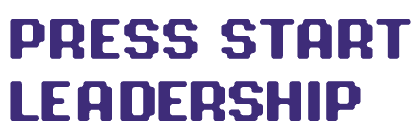Creating Engaging Video Games: A Beginner’s Guide to Concepting and Prototyping
Learn the Basics of Brainstorming, Prototyping, and Playtesting for Successful Video Game Design
Creating a video game can be a complex process, but it all starts with a simple idea. In this article, we’ll explore the basic steps of video game concepting and prototyping, and provide examples to help illustrate these steps.
Brainstorming Game Ideas
The first step in video game concepting is brainstorming game ideas. This involves coming up with a general theme or concept, and then generating more specific ideas that fit within that theme.
For example, let’s say you want to create a puzzle game. You might start by brainstorming ideas related to puzzles, such as word puzzles, number puzzles, or logic puzzles. From there, you could generate more specific ideas, such as a game where players have to solve math problems to progress, or a game where players have to match colors to progress.
Another example is creating a first-person shooter game. You might brainstorm ideas related to first-person shooters, such as different weapons, settings, or enemies. From there, you could generate more specific ideas, such as a game set in a post-apocalyptic world where players have to fight off zombies, or a game set in outer space where players have to defend their spaceship from aliens.
Refining Your Game Idea
After brainstorming, you’ll need to refine your game idea by thinking about its mechanics, setting, characters, and story.
For example, let’s say you’ve decided to create a game where players have to solve math problems to progress. You’ll need to think about the mechanics of the game, such as how the math problems will be presented, how difficult they’ll be, and how players will progress through the game.
You’ll also need to think about the setting of the game. Will it be set in a school or classroom, or in a more fantastical setting like a castle or dungeon? You’ll also need to think about the characters in the game. Will players be playing as a student trying to pass a math test, or as a wizard trying to solve math puzzles to save the world?
Finally, you’ll need to think about the story of the game. How will the math problems fit into the story, and what will be the ultimate goal of the game? Creating a GDD can help you organize your thoughts and ensure that you have a clear vision for your game.
Creating a Prototype
With a clear game idea and GDD, it’s time to create a prototype. A prototype is a basic version of your game that lets you test out your mechanics and gameplay ideas.
For example, let’s say you’ve decided to create a game where players have to solve math problems to progress. You could use a prototyping tool like Construct or GameMaker Studio to create a simple version of the game where players are presented with math problems and have to choose the correct answer to progress.
Another example is creating a first-person shooter game. You could use a game engine like Unity or Unreal Engine to create a basic version of the game where players can move around a level and shoot at targets.
The key is to create a playable prototype as quickly as possible so that you can start testing your game mechanics and gameplay ideas.
Playtesting Your Prototype
Once you have a playable prototype, it’s time to start playtesting to get feedback on what works and what doesn’t. Get feedback from a diverse group of players with different skill levels, ages, and backgrounds.
For example, if you’re creating a math puzzle game, you might want to get feedback from students of different ages and skill levels. Ask them specific questions about what they liked and didn’t like about the game, and use this feedback to make changes and improvements to your prototype.
If you’re creating a first-person shooter game, you might want to get feedback from gamers with different levels of experience with the genre. Ask them specific questions about the controls, the level design, and the difficulty level.
Use the feedback you receive during playtesting to make changes and iterate on your prototype. This might involve tweaking the game mechanics, adjusting the difficulty level, or improving the overall player experience.
Iterating on Your Prototype
Based on the feedback you receive during playtesting, make changes and iterate on your prototype. Refine your game mechanics, adjust the difficulty level, and improve the player experience.
For example, if you’re creating a math puzzle game and players are finding the math problems too difficult, you might need to adjust the difficulty level or provide more guidance to help players solve the problems. If players are finding the game boring, you might need to add more variety or excitement to the gameplay.
When you’re creating a first-person shooter game and players are finding the controls difficult to use, you might need to adjust the control scheme or provide more tutorials to help players learn how to play. If players are finding the game too easy or too hard, you might need to adjust the difficulty level or provide more options for customization.
Remember that game design is an iterative process, and you may need to go through several rounds of playtesting and prototyping before you have a game that is fun, engaging, and well-balanced.
Finalizing Your Game Design
Once you have a polished prototype that has been playtested and iterated on, it’s time to start finalizing your game design. This means fleshing out the story, creating detailed character designs, and refining the level designs.
At this stage, it’s also important to consider the technical aspects of game development, such as optimization and performance. You’ll need to make sure that your game runs smoothly on a variety of platforms and devices.
Marketing and Launching Your Game
Once your game is complete, it’s time to start thinking about how you’ll market and launch it. This involves creating a marketing plan, building a community around your game, and working with distributors and retailers to get your game into the hands of players.
One key aspect of marketing your game is creating a strong brand and visual identity. This includes things like creating a logo, designing a website, and creating promotional materials like trailers and screenshots.
Final Thoughts
Video game concepting and prototyping are essential steps in creating a video game. By brainstorming game ideas, refining your game concept, creating a prototype, playtesting, and iterating, you can create a compelling and engaging game that players will love. Remember that the key to success is to start with a clear game idea and iterate on it through playtesting and prototyping. With dedication and hard work, anyone can create a great video game.
Thank you for reading this blog to the end. I hope it has been informative and helpful. If you’d like to learn more about the topics we covered, I invite you to check out my podcast and my YouTube channel where I delve into these subjects in more depth.
Additionally, I would love to stay in touch and keep you updated on all the latest developments and insights in the world of leadership. That’s why I encourage you to sign up for my newsletter. Not only will you receive regular updates, but as a thank you for joining, I will also send you my free eBook, “5 Heroic Leadership Skills.” This eBook is packed with practical tips and strategies that will help you take your leadership skills to the next level.
So don’t wait! Sign up for my newsletter today and start your journey towards becoming a more effective and inspiring leader. I can’t wait to hear from you.


